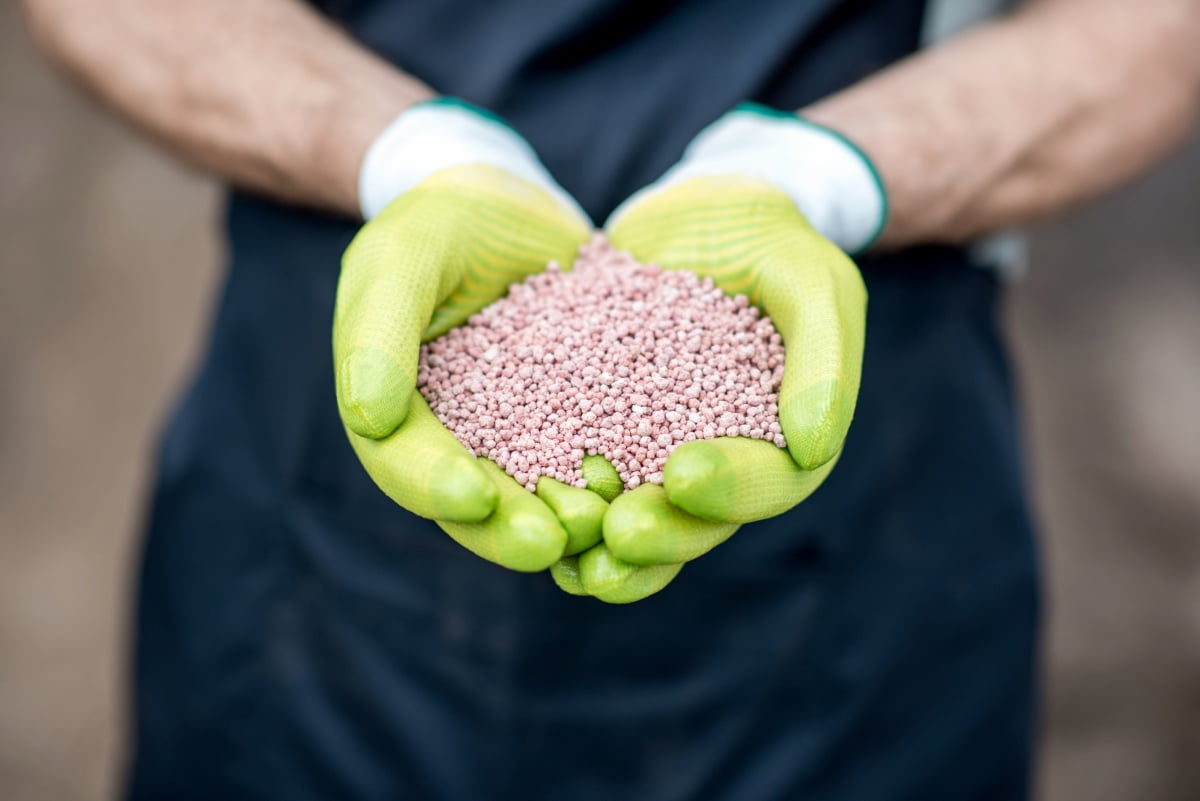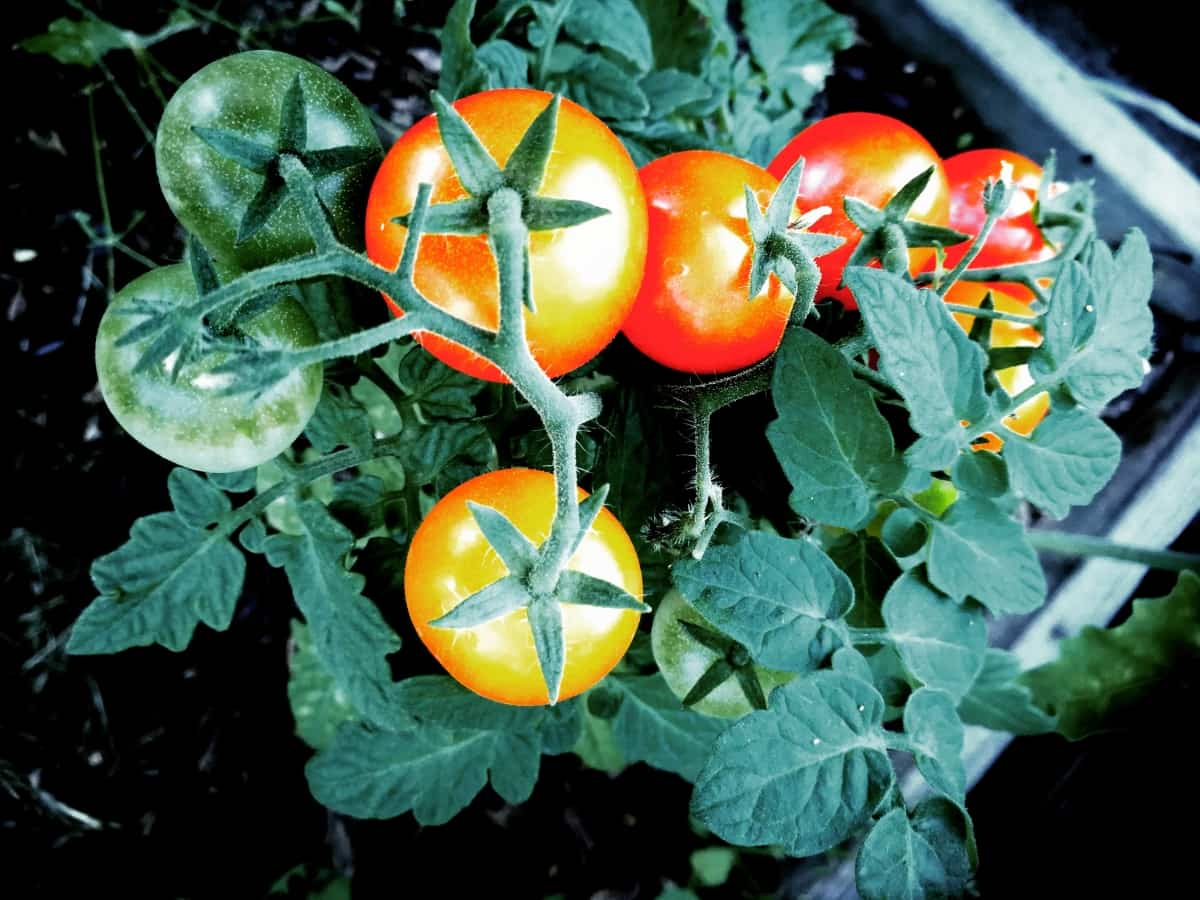Fertilizer application is a crucial aspect of plant care that perplexes even the most experienced gardeners. Potted vegetable plants’ nutrient needs and fertilizer requirements differ somewhat from plants grown in open fields. This is primarily due to pots’ limited space and unique environment, affecting nutrient availability and root development.

Here we learn about ideal fertilizers for potted vegetable plants, homemade alternatives, organic and synthetic fertilizers, the relevance of NPK ratios, and instructions on when and how to apply these fertilizers for indoor and outdoor settings.
Best Fertilizer for Potted Vegetable Plants
Understanding Fertilizer Needs for Potted Vegetable Plants
Potted vegetable plants are unique in their requirement for nutrients. With limited soil volume, the nutrients within the pot are quickly exhausted, necessitating regular supplementation. Whether you’re growing leafy greens like spinach, root vegetables like carrots, or fruiting vegetables like tomatoes, each has specific nutrient requirements.
Nitrogen (N) aids leafy growth, Phosphorus (P) supports root development and flowering, and Potassium (K) is essential for overall plant health and fruit development. By understanding these basics, you can choose the right type of fertilizer to ensure optimal growth.
Homemade Fertilizers for Potted Vegetable Plants
- Compost: Kitchen scraps like vegetable peels, coffee grounds, and eggshells can be composted over time to create nutrient-rich compost. This “black gold” is an excellent source of slow-release nutrients and can be mixed into the potting soil or used as a top dressing.
- Worm Castings: Vermicomposting, or worm composting, is another excellent way to convert kitchen scraps into nutrient-rich fertilizer. The worm castings are a well-balanced fertilizer, rich in macro and micro-nutrients.
- Banana Peels: Banana peels are high in potassium, which is necessary for plant health. You can dry and grind them to make a powder or soak them in water for a liquid fertilizer.
- Eggshells: Eggshells, high in calcium, can be used to counter calcium deficiencies in plants like tomatoes that are prone to blossom end rot.
Organic Fertilizers for Potted Vegetable Plants
- Bone Meal: Bone meal is a great way to get phosphorus for plants, which helps roots grow and flowers bloom.
- Blood Meal: Blood meal is rich in nitrogen, supporting leafy growth, making it ideal for vegetables.
- Fish Emulsion: Fish emulsion is a well-balanced, fast-acting organic fertilizer. It should be used more often, but it gives a fast and powerful dose of nutrients.
- Kelp Meal: Kelp meal comes from seaweed and has lots of trace minerals and potassium.
- Composted Manure: Composted cow or chicken manure is a great source of balanced nutrients and contributes to better soil structure and moisture retention.
In case you missed it: The Best Fertilizer for Lotus: When and How to Apply

Synthetic Fertilizers for Potted Vegetable Plants
- Water-Soluble Fertilizers: These are typically used for a quick nutrient boost. They are immediately available for plant uptake but need frequent application. Examples include 24-8-16 NPK or 12-15-30 NPK, which are excellent for various vegetable plants, including fruiting plants like tomatoes.
- Controlled-Release Fertilizers: These granules are coated to allow nutrients to be released over time, providing a sustained nutrient supply. 14-14-14 NPK is a balanced option suitable for most vegetable plants.
- Specialized Formulations: Some synthetic fertilizers cater to specific types of plants with tailored NPK ratios. For instance, fertilizers for leafy greens have higher nitrogen content, while those for fruiting vegetables might have higher phosphorus and potassium content.
Deciphering NPK Ratios
NPK stands for Nitrogen (N), Phosphorus (P), and Potassium (K), the three primary macronutrients required by plants. The numbers in an NPK ratio represent the percentage by weight of these three nutrients. For example, an NPK ratio of 10-10-10 indicates that the fertilizer contains 10% each of Nitrogen, Phosphorus, and Potassium. Nitrogen promotes green, leafy growth and is essential for vegetables.
Phosphorus supports strong root growth and helps plants produce flowers and fruit, making it crucial for root vegetables and fruiting plants. Potassium enhances overall plant health and disease resistance and aids in fruit development. A balanced NPK fertilizer, like a 10-10-10 or a 14-14-14, provides equal parts of these three nutrients and is generally good for an overall vegetable garden. However, depending on the vegetable type, you may opt for a fertilizer with a different NPK ratio that suits their nutrient needs better.
When and How to Apply Fertilizers to Potted Vegetable Plants
Whether indoors or outdoors, potted plants have a restricted volume of soil from which they can draw nutrients; thus, regular fertilizing is essential. However, the timing, amount, and way of using a fertilizer can differ based on the type of fertilizer and the specific requirements of the plant.
When to Fertilize
A general rule of thumb is to start fertilizing when the first true leaves appear for seedlings or immediately after planting mature plants. During the active growing season, fertilizing should be done regularly, typically every two weeks for water-soluble synthetic fertilizers or every 4-6 weeks for organic slow-release fertilizers. Always follow the manufacturer’s instructions, as over-fertilizing can be as harmful as under-fertilizing.
How to Apply
Ensure the soil is moist before applying any fertilizer to prevent root burn. To apply granular fertilizers, evenly spread the suggested quantity near the plant’s base, making sure to avoid touching the stem directly. Afterward, give the plant a good watering. When it comes to water-soluble fertilizers, mix the recommended amount with water and apply it to the plant’s base. If you have homemade or composted manure, you can either mix it into the potting soil while planting or use it as a layer on top of the soil.
Indoor vs. Outdoor Fertilizing
Indoor potted plants generally require less fertilization than outdoor plants due to slower growth rates and less environmental stress. However, they may be more prone to micronutrient deficiencies due to the limited soil volume and lack of soil organism activity, making a balanced, micronutrient-inclusive fertilizer a good choice.
In case you missed it: The Best Fertilizer for Tulips: When and How to Apply

Outdoor potted plants, especially during the active growing season, will need more frequent fertilization due to faster growth rates and greater environmental stressors. The higher light, temperature fluctuations, and rainfall can lead to more rapid nutrient depletion. Using a mix of slow-release and fast-acting fertilizers can ensure a steady nutrient supply.
Conclusion
By considering factors like the type of vegetable, stage of growth, indoor vs. outdoor setting, and the type of fertilizer, you can ensure your potted vegetable plants get the nutrients they need to flourish and produce a bountiful harvest.
- Feed Your Flock for Less: Top 10 Tips to Save on Chicken Feed
- Ultimate Guide to Ossabaw Island Hog: Breeding, Raising, Diet, and Care
- Hatching Answers: The Top 10 Reasons Your Chickens Aren’t Laying Eggs
- Eggs and Economics: Breaking Down the Cost of Raising Backyard Chickens
- Defend Your Greens: Proven Methods to Keep Iguanas Out of Your Garden
- Ultimate Guide to Cinnamon Queen Chicken: A Comprehensive Guide for Beginners
- Ultimate Guide to California Tan Chicken: Breeding, Raising, Diet, Egg-Production and Care
- Ultimate Guide to Marsh Daisy Chicken: Breeding, Raising, Diet, and Care
- 10 Types of Chicken Farming Businesses You Can Start for Profits